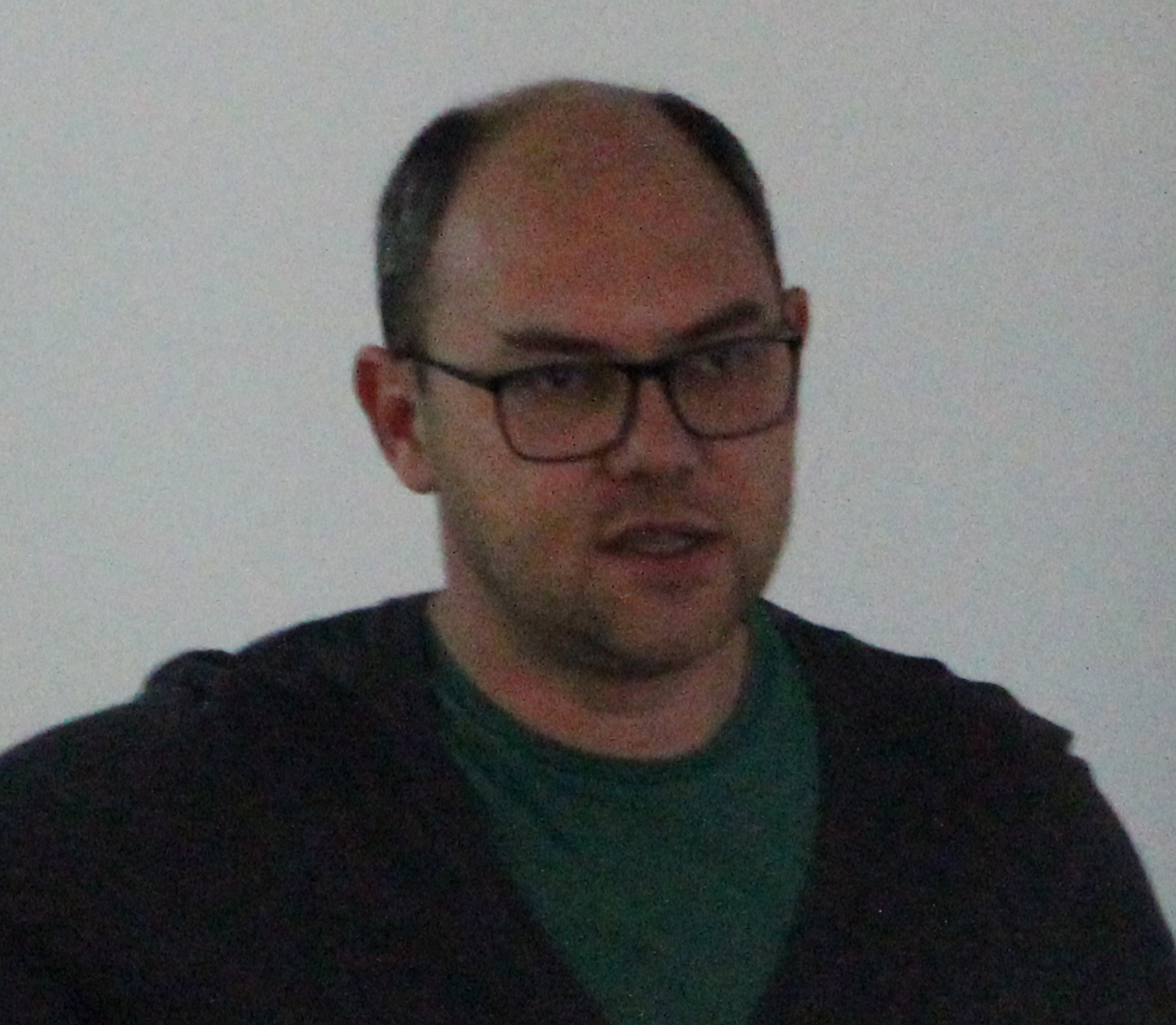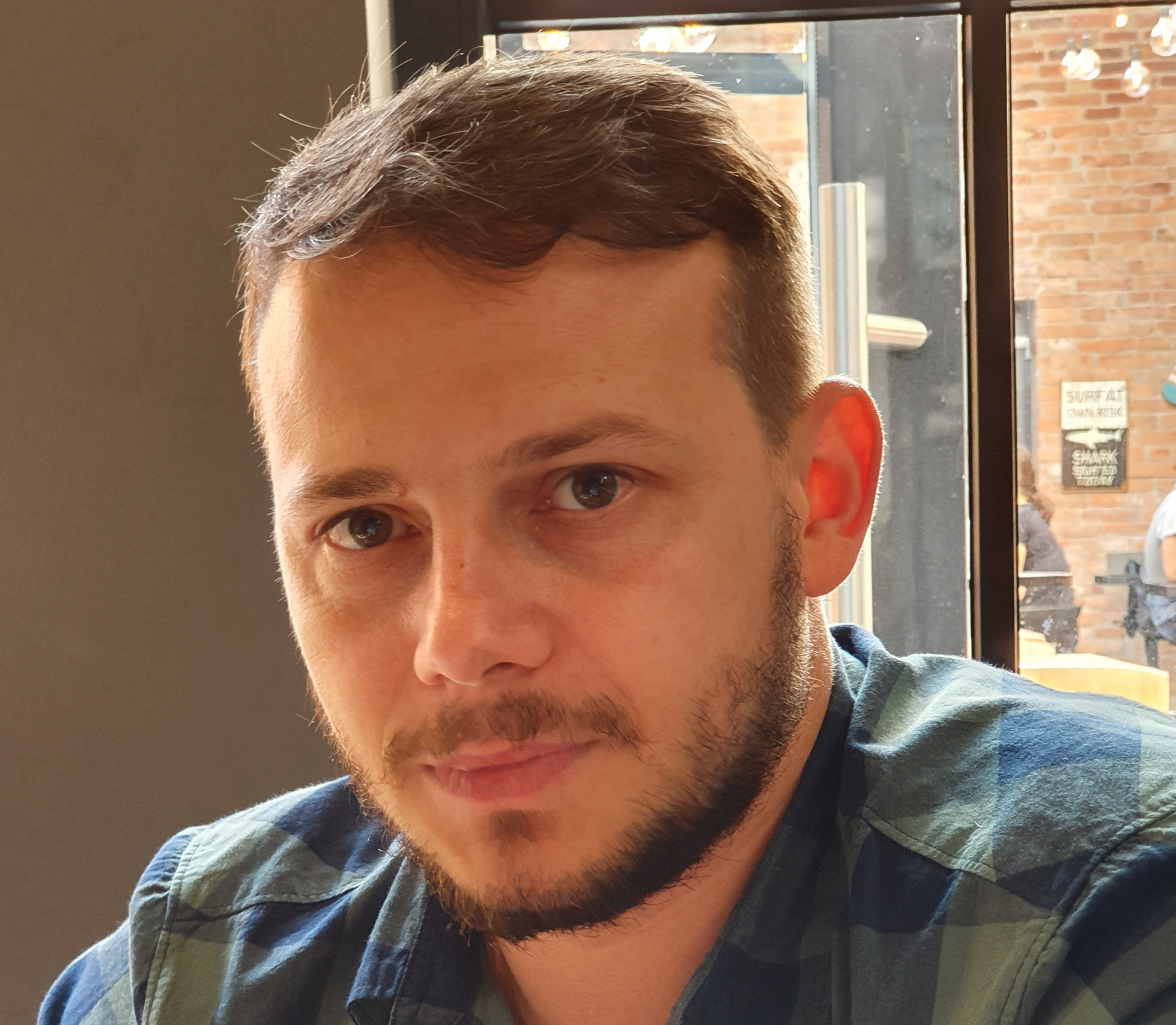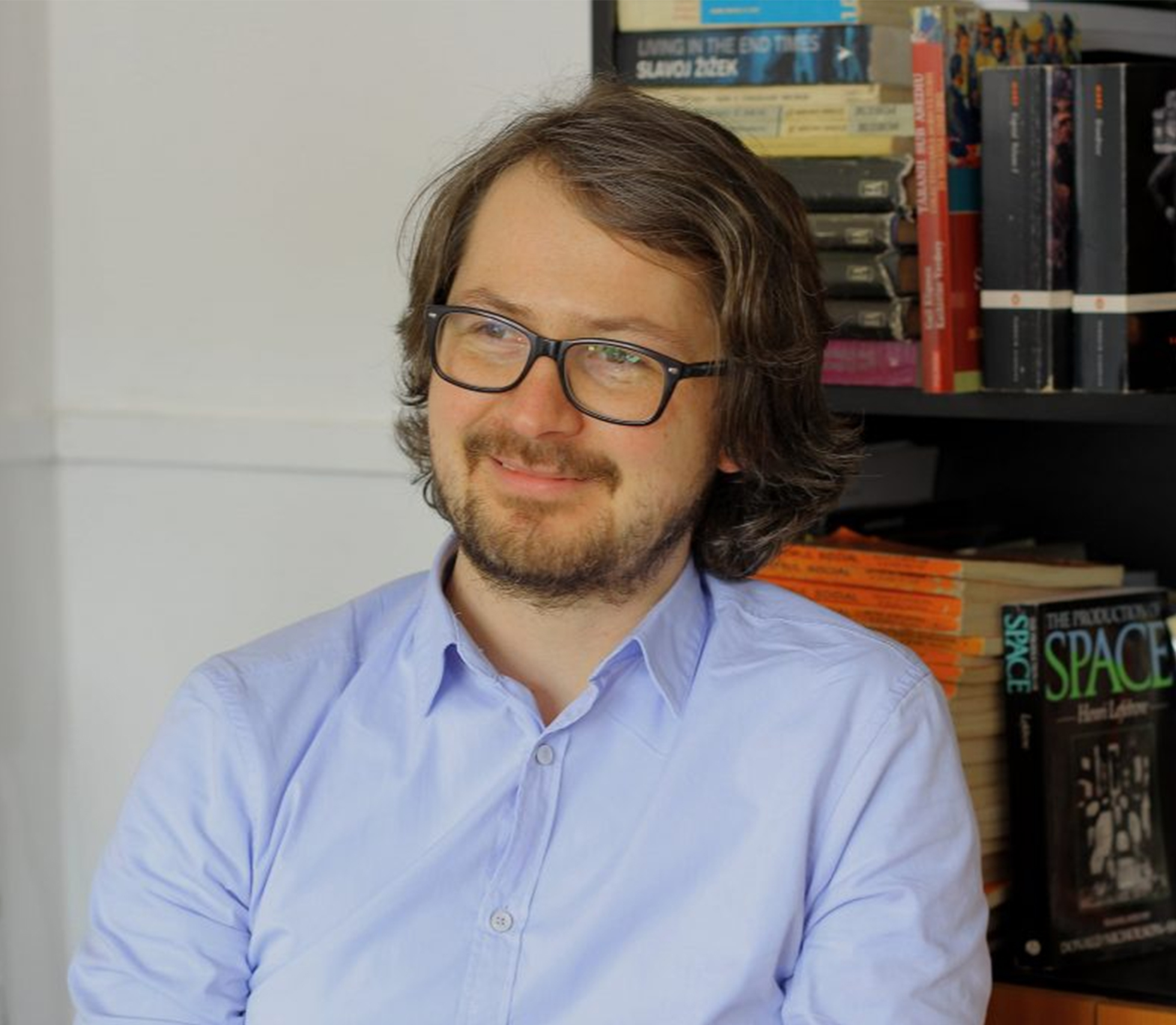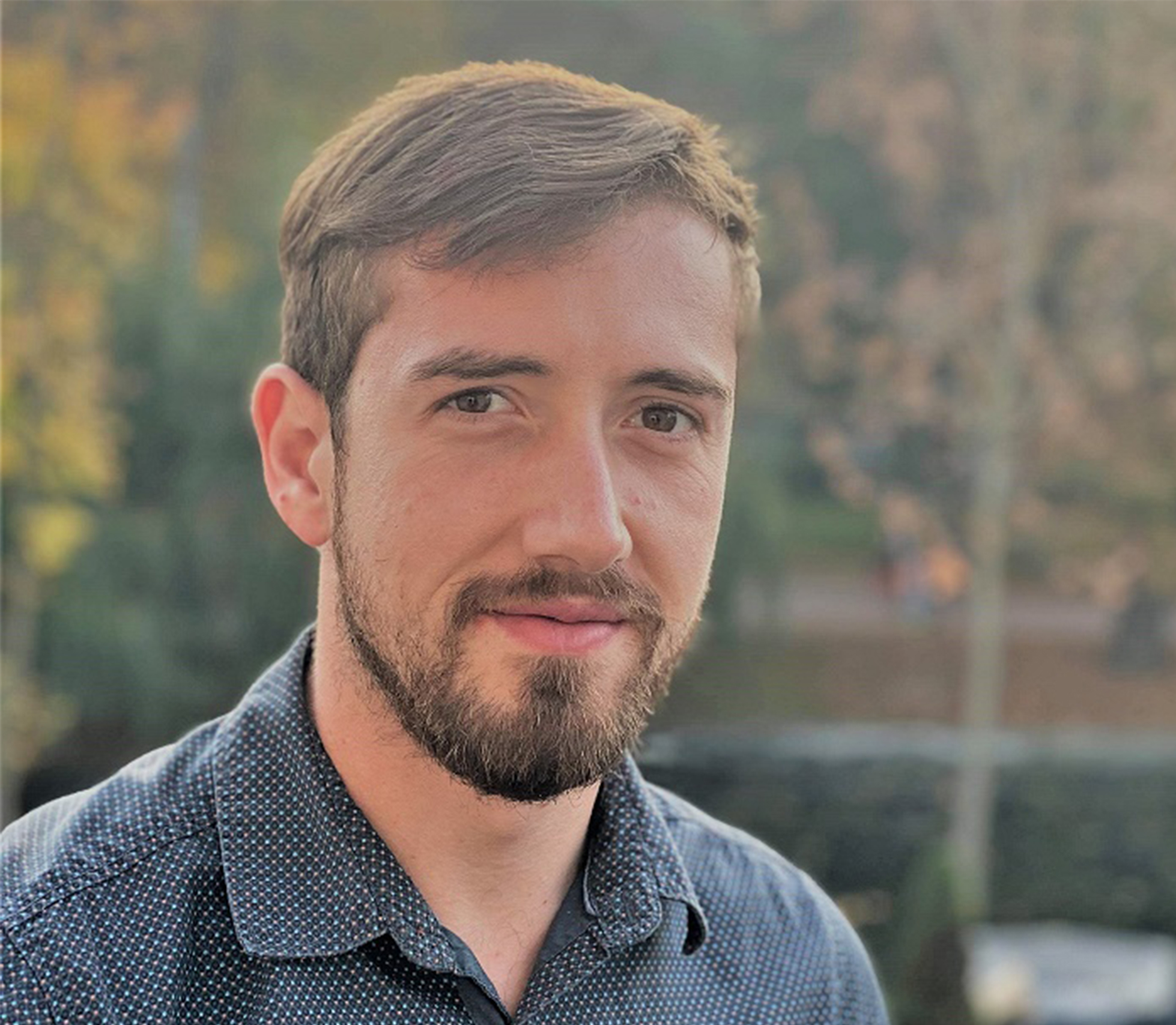O1.M2.04. Speaking with communities. How to conduct an interview with local actors
Free
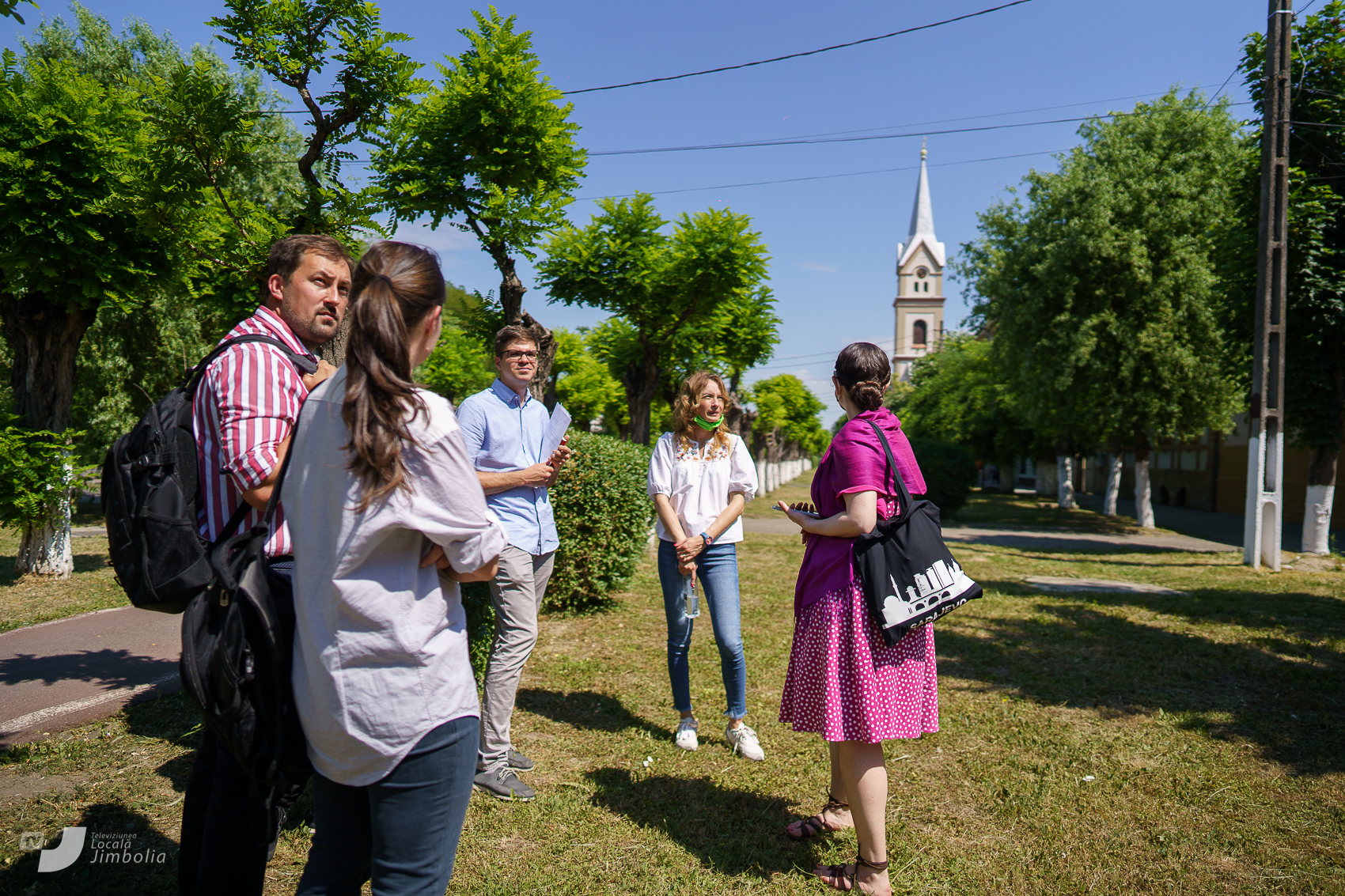
About this course
Chapter 1 – What is an interview? Differences between interview and conversation
Researchers of the social organizations and processes, regardless their background (i.e sociologists or architects), can mobilize in their endeavors a quantitative or qualitative driven research strategy. The aim of a quantitative strategy is to test hypotheses about the relations between different variables, with results often expressed as numbers. The larger samples sizes are preferable for obtaining the data most of the times with a survey based on a questionnaire. After the data is gathered, statistical methods are deployed for the preparation and analytical part of the work. Generally, the quantitative methods help researchers respond to “the what” (is happening) question. From another perspective, the qualitative research strategies follow “the why” questions. Most of the times, the qualitative methods help formulate hypotheses and enable a deeper understanding of the researched interest (perceptions, ideas, feelings). The data is gathered from small samples and the main methods are surveys based on interviews or focus groups, that produce results expressed in words. In what follows, our interest is to present the qualitative method based on the widely used instrument, which is the interview.
Interview as a research method or as practice owes its rapid development both to the institutionalization of social sciences and to its adaptation across several disciplinary branches, such as marketing studies. Although usually integrated to the wider methodological categories of survey or case study (Platt, 2012), the interview occupies a place of its own which has been theorized both conceptually and technically within manuals, handbooks, academic articles or practical guides.
In a more general manner, interviewing looks very similar to a conversation between two or more actors on a given subject. Contrary to this popular belief, although it is important that an interview possesses a conversational character (Rapley, 2004), the two forms of interaction are rather distinct. In other words, it is important that the interview should imitate the flow of a natural conversation rather than the sterile question followed by answer format of a survey, but there are some defining structural elements which separate them. First, as Edwards & Holland (2013) states, there is an asymmetry in the power relations between the interviewer and the respondent, as the former is the one who dictates the purpose of the dialogue by asking specific questions and requiring the interviewee to probe his answers. Moreover, he controls it by asking specific questions and paying close attention to what the interviewee has to say in relation to his topic of interest, therefore gaining the character of a professional interaction (Kvale, 2007). Secondly, informal conversations might contain moments of boredom or ignoring the other without harming the overall quality of the dialogue (Talmage, 2012). On the other hand, the lack of attention or apathy on the side of the interviewer is not perceived as a proper attitude. Therefore, listening becomes one of the central aspects of interview, something every scholar should train.
Listening is a major theme, being included and discussed about in student guides and handbooks. While some of the literature insists to make a difference between listening and hearing, some authors claim that there are various degrees of listening which are implied when conducting an interview. As Seidman (2006) argues, there are at least 3 levels of listening required for the researcher. The first one is clearly related to what the participant is saying, to understand it and evaluate its degree of comprehension. The second one refers to the specific context when the interviewee uses a specific language in order to appeal to what would they think that the interviewer wants to hear, as in this example: “For example, whenever I hear participants talk about the problems they are facing as a “challenge” or their work as an “adventure,” I sense that I am hearing a public voice, and I search for ways to get to the inner voice.”. (Seidman, 2006, pp. 78-79) Thirdly, there is an important connection to be made by the interviewer between his wider conceptual categories he has in mind and the speech of the respondent. In this way he is able to conduct the discussion and assuring the natural flow that a normal conversation would have, while transitioning from one topic to another. As a consequence, there is a consensus between specialists, regardless of their epistemological standpoint, that listening is more important than speaking, being summarized as a suggestion in one of the sub-titles of an article: “Talk less and listen more” (McGrath et al., 2018).
Chapter 2 – Types of interviews
Being used across a wide spectrum of disciplines or specific themes, the interview as a research method developed particular features across the different theoretical fields. Besides the classical distinctions regarding the number of respondents or the degree of structuration, different research traditions, by producing substantial work, have been responsible for innovating the methodological level. Therefore, varying ways of approaching or conducting an interview were developed, being situated in a relation of interdependence to the disciplines and the themes which were documented. For example, ethnographic interviews are intertwined with anthropological practice and their concern for ethnography as their main method. Continuing the presentation, I’m going to focus on the main distinctions which generate a variety of typologies regarding interviews, as well as briefly discussing some examples and their main features.
The first methodological line which divides the method between different forms of interactions is concerned with the degree to which the conversation is structured. There are three types according to this principle: structured, semi-structured and un-structured, the latter two being the ones more connected with the qualitative design of a research. The structured interviews are based on a clear interview schedule which has the questions which should be asked, and their specific order and it aims at collecting the data in a standardized way (Fielding, 1994). Moreover, they are rather associated with market research and with quantitative approaches, since the focus is on answers which can be easily quantified. The following two types of interviews are different in the sense that they look to understand the meaning of a phenomenon starting from the subject’s experience, while also allowing a greater degree of freedom for the interviewer regarding to questions and their order. The semi-structured interview possesses characteristics of a questionnaire, having a pre-determined schedule, but, in this instance, the operator is allowed to deviate from the plan and the subject is not supposed to give standardized answer to the questions (McIntosh & Morse, 2015). The researcher bears in mind the themes or topics that he wants to discuss with the respondent, but there is neither a clear format nor a strict order. He prepares a set of questions, but this kind of interaction allows for changes and a greater flexibility, as the purpose is to understand the interviewee’s situation and build a discussion on the top of it. On the other hand, the unstructured interview is lacking even the loose schedule of the of the semi-structured one, as it almost takes the form of an informal conversation. The unstructured interview is commonly used by Anthropologists on the field research, especially at the beginning of their field experience (as they have an exploratory character) when they try to make sense of the local categories and conceptions.
The second division is concerned with the number of participants in an interview. Individual interviews are the most common across academic disciplines, due to reasons such as them being simpler to organize and the participant not being inhibited by another presence. The interviewer has a greater control, but there’s the risk that the interviewee might present himself how he likes to be seen by the researcher. A specific type which usually implies one individual who participates in multiple interactions is the longitudinal interview. Its idea is to have multiple discussions with the same person and is particularly useful when the researcher is working in a new community, because it gives him/her time to build a trusted connection with the subjects involved as well as reflect on the information gathered (Grinyer & Thomas, 2012). Group interviews, known as focus groups, usually contain between 6-10 participants and have been used in the past for marketing purposes. Their overall goal is rather to produce debates and contradictory discussions among people involved than a consensus among people. A researcher might as well only interview two or three persons, therefore not a focus group, but it is important that he/she notices the existing balance of power and pay attention when one respondent is trying to speak in the name of the others.
Other typologies of interviews are primarily defined by their purposes (what does the researcher want to find out about) and by their relation to an epistemological perspective (how does the scholar see its practice in the context of knowledge production). We are focusing more on semi-structured interviews, as they are widely used across qualitative methodology. Some of the examples, as presented by Kvale (2007), of typologies of semi-structured life-world interviews are: factual interviews, conceptual interviews, narrative interviews, and confrontational interviews. The first two are more akin to the view that the respondent possesses valuable insights and it’s the researcher duty to find it. Hence there is a clear-cut distinction between the two existing roles. On contrary, the latter ones are related to the perspective that knowledge is built through conversation by both actors, and the interviewer is responsible for the data produced as well, because he’s not merely collecting it without influencing the content obtained (Borer & Fontana, 2012). The factual interview is less concerned with meanings and interpretation and is requesting accurate information. For examples, historical projects that aim to construct a community’s collective past might use this technique. Conceptual interviews, on the other hand, aim at understanding the conceptual categories used by the subject or by its community. Therefore, the questions are related to the meanings of certain structures or phenomena. This type of interaction is quite common among anthropologists, as they are researching such as ways communities are organized, their belief system or even the kinship structure. Narrative interviews’ main point are the stories of the respondents, being sensible about plots and structures. Contrary to the factual interviews, the focus is not that much on valid information as on the stories that the people share and their own interpretations of it. Moreover, the researcher is expected to encourage the respondent and even help him to structure his narration. Finally, confrontational interviews are centered around the idea of an active interviewer who engages in a dialogue with his respondent and even challenges his positions or question his answers. Although these forms of interaction are useful as they explore and make explicit some of the assumption of the interviewee, there are sometimes questioned on an ethical basis as the subject might consider these challenges to be intrusive. It’s important to mention that these categories of interviews are rather ideal types, and each one might include elements of the other. For example, stories might appear at each point (since a great deal of knowledge is passed upon through narrations), and even if someone is searching for a factual account of a past event, it’s highly likely that the response would take a narrative form.
Chapter 3 – Preparing the survey
Kvale (2007) argued in his short practical guide that there are 7 main steps to be taken when planning for an interview study as a part of a wider research project: thematizing, designing, interviewing, transcribing, analyzing, verifying, reporting. It’s mandatory to mention that the order has rather an analytical purpose, as it’s easier to understand the sequences as they should ideally follow. Furthermore, this is not the only conceptual scenario of the steps needed in order to develop a research design, different approaches being theorized (Kallio et al., 2016). In practice, different stages could overlap. For example, taking interviews could highlight something that was missing originally from the research design. Also, reporting the findings and discussing them with fellow academic peers might open the way for other themes to be studied, which could support the need for the researcher to come back to the field. Within this guide we focused largely on the first three steps. Verifying and Reporting need to be analyzed in a broader frame, by referring to the overall research project. This chapter deals mostly with the concept of thematizing a study, but also briefly with designing it. The following one, which discusses the topic of interview questions, is related to interviewing. The last chapter returns to the concept of design by touching upon the issue of sampling and saturation in qualitative research.
Thematizing an interview study supposes coming up with research questions, which should guide the scholar through his investigative process, while also gaining a theoretical clarification on the themes which would be studied. According to Kvale (2007), thematizing should answer to three main questions: Why? What? How? The why should clarify the purpose of the study, while the what underlines the need for closer pre-examination of the subject. The how on the other hand is also related with the designing an approach, as it presupposes to think of the suitable methods and techniques.
First, answering to why means to come up with a research purpose. This step is of particular relevance, as the purpose is likely to determine how one should approach a topic. Therefore, if the interview study aims at understanding the local way of organizing the kinship relations between the inhabitants of a small and isolated community, it’s important to obtain clarifications of the categories used by the subjects. The conceptual interview might come in hand in this situation. Moreover, if the study develops an exploratory frame, it’s likely to employ un-structured interviews. On contrary, testing a theoretical hypothesis might require a semi-structured guide. For example, one of the hypotheses of our work in Kikinda and Jimbolia was that people were likely to have past experiences related to the brick industry which existed in the two cities. Consequently, we tried to test this hypothesis and we included some open-ended questions referring to it in our guide. Our aim was to reconstruct the common past of the local people through narration.
Secondly, focusing on the what means gaining more insights about the theme (or themes) of the study. This process implies a dual understanding of the already existing knowledge (Kallio et al., 2016). On the one hand, the researcher should develop his conceptual and theoretical understanding of the subject that he is documenting. This part is important because it helps him to create a conceptual apparatus, but also to know to which body of knowledge he does contribute to with his project. Academic literature might not always be available, but the interview study could go forward without it. On the other hand, the scholar should understand the community in which he is working, to gather empirical data for the context. This aspect might go a step further and require more than just interviews, to methods such as participant observation or ethnography, both common approaches across anthropologists.
Lastly, how refers to the way a researcher plans his study, thus the relatedness to the designing part. Planning requires a clear temporal frame, during which the interview study should take place. It is advisable for the scholar to have a plan for the whole span of the survey and take into consideration how different stages might require different approaches. Answering to how implies also establishing the number of respondents and in what way the interviews should take place (where, how many people etc).
Chapter 4 – Questions and Questioning
The main form of which themes and topics are introduced in the interview by the researcher is through questions. They are specific for the interviewer, as the interviewee is expected to answer them and provide valuable information. This is the point where the asymmetries in the balance of power are obvious, as the researcher is the one who asks question, he’s picking the topics that are considered worthy and need to be further addressed, while ignoring something he might not find important. In our case, semi-structured interviews do not presuppose having a specific schedule or list with questions, there is a greater flexibility regarding how the person in charge might formulate them. Asking questions seems more akin to a craft, as the process of learning how to do it requires practicing. There is no universal scenario on how to approach a topic, different ways of asking questions might result in different answers from the same respondents. Despite this rather confusing aspect of the interviewer’s craft, there are some general rules which should be followed when preparing or putting questions during an interview.
First of all, there is an overall consensus that the language used in the questions should be clear and without any ambiguity (Babbie, 1992). It’s important that the questions should be short, as the interviewee is the one who is expected to do most of the talk. Therefore, it’s easier for the participant to follow on the question and to provide an answer. Moreover, it’s important not to include 2 or more distinct topics within the same interrogation. Another 2 basic rules, as highlighted by Seidman (2006), are to avoid leading questions and try to ask open-ended questions. Leading questions refer to inquiries that might influence the answer given by the respondent, by pointing to a certain direction that the researcher would expect the conversation to go. Although it could be a simple mistake regarding the way the question is articulated (such as including a possible outcome to the question), in some cases there might be the researcher’s bias for a particular explanation of the phenomena documented. A similar problem, which does not always arise due to the quality of the question, is encountered when studying controversial topics. In these situations, there might appear something known in social sciences as socially desirable answers. For example, if someone is trying to understand how racial stereotypes are spreading in a mixed community, it shouldn’t come as a surprise when respondents would try to answer the questions in a manner that would portray him/her in a positive light, as someone who does not share such thoughts. On the other hand, open-ended questions open a thematical area for exploration via the dialogue, but, unlike the leading questions, they do not point to a certain direction when answering (Seidman, 2006). Nevertheless, it’s of particular relevance that questions in a research interview should rather take a descriptive form than ask the respondent why he/she thinks that something has happened. It’s important for a researcher to search for concrete information instead of a highly speculative answer.
In the following paragraph I’m going to name the different types of questions as schematized by Kvale, using some of his short examples (Kvale, 2007, pp. 60-61):
-
- Introductory questions – are aimed at opening the discussion about the topics and seek for a detailed answer: “Can you tell me about…?”; “Do you remember an occasion when…?”
- Follow-up questions – are usually meant to ask for an elaboration or clarification of what has just been said. Their aim is to encourage the respondent to continue with his description or narration.
- Probing questions – refer to the situation when the researcher wants to address profoundly a certain aspect of the ongoing discussion: “Could you say something more about that?”; “Can you give a more detailed description of what happened?”
- Specifying questions – are used when the interviewer wants a more specific account of some general statements made by the interviewee. Also, they are useful when trying to operationalize an answer, moving from a rather common and surface meaning of a phenomenon to a more personal account.
- Direct questions – refer to interrogations which introduce another theme/dimension of the script. For example, in the case of our example guide, a direct question would be “I would like you to think about your school years and tell me where and how were the different schools which you attended”, as it implies a clear change of topics, from the respondent’s memory of the places where he/she grew up to a discussion about school years.
- Indirect questions – might imply a projective attitude, the researcher wants to know the experience of some other peers of the respondent (but it could also reflect the respondent’s attitude). For example, the theme related to the school years may possibly be followed by a question regarding the schools attended by their neighbors. This would open a wider discussion about different schools and local meanings and perceptions attached to them.
- Structuring questions – indicate when a theme has been thoroughly discussed. The interviewer might try to summarize it and to see if the respondent has something much to say or move to another topic.
- Silence – although it seems ironical to include periods of silence in a list about questions, there is a practical purpose of it. A brief period of silence gives the respondent time to reflect on his experience or remember something that he could have forgot to tell.
Second questions – Although almost all of each of the former presented types could act as second questions, a significant shift from them is implied. As novices might tend to stick to the main schedule (Roulston), second questions demand a certain mastery of the craft as they are very much context dependent, and thus unpredictable. They require active listening, skill, and a higher degree of flexibility. Also, it’s necessary to mention that there is no correct way of addressing a second question, but the choice that the interviewer makes might affect the direction of the discussion by focusing on some specific aspects.
Chapter 5 – How many people do we need?
One of the central problems when pursuing an interview-based study is the number of respondents you need. In the case of qualitative design research, the practice of calculating a probabilistic sample size, by mathematical estimation, is not that common. As Guest et al. (2006) claims “Research that is field oriented in nature and not concerned with statistical generalizability often uses nonprobabilistic samples. The most commonly used samples, particularly in applied research, are purposive” (p. 61). Although common sense seems to support the idea that the many respondents, the better, in practice this statement is contradicted by what we call saturation. The concept of saturation refers to “the point in data collection when all important issues or insights are exhausted from data, which signifies that the conceptual categories that comprise the theory are ‘saturated’, so that the emerging theory is comprehensive and well-grounded in data”. (Hennink & Kaiser, 2022: p. 1). More precise, there is a ceiling when collecting data and if the process of gathering data by interviews continues, it is unlikely to yield different and innovative information.
However, taking into consideration all the knowledge produced through interview-based studies, there is not a consensus between specialists of when the phenomenon of saturation occurs. On the contrary, there is a lack of work done on when saturation is actually reached, and the methodological section of fields-based research article does not touch upon this problem. The existing literature though highlights two main directions on how to approach saturation, which share similar features. The first one underlines that the number of participants is ultimately determined by the research process and shifts the attention from a pre-determined number to a more flexible attitude which allows for changes at all stages of the project (from designing the study, to the analysis of the empirical material). Yet when applying for funding your research project, you need to be more precise with the number of interviews which are required in order to conduct the study. The second approach tries to evaluate the number of interviews necessary before saturation occurs, by taking into consideration the purpose of the research and the overall preconditions on the field. Therefore, they differentiate between studies which aim to produce an empirical-grounded theory (and need more data) and smaller projects on family histories, for example. Moreover, the estimations are usually based on communities which are perceived to be homogenous, so there is a theoretical presupposition that knowledge is distributed among the members. Within these conditions, the analyses argue that 12-13 interviews are the number which normally should be pursued (although in some cases fewer might be enough), after that the amount of innovative information seems to decrease ((Guest et al., 2006; Hennink & Kaiser, 2022).
Chapter 6 – Interview Script – example
The last part has a clear practical purpose: to show the students how a semi-structured interview survey looks like. The purpose of this inquiry was to gather oral histories of the people from the 2 communities studied (Jimbolia and Kikinda) and the emotional connections and stories that they share in relation to both their places and the wider region of the historical Banat. Furthermore, the aim was to understand how the multi-faceted relationship between locals and the spaces that they inhibit unfolds. The schedule has 6 main talking points, each suggesting possible questions which could help the interviewer to get a better perception of the story shared by the respondent.
Besides the schedule, there is also a section dedicated to extracting quotes from the interview and interpreting them. This exercise serves some of the latter stages of transcribing and analyzing the spoken data. The goal was to encourage students to pick quotes which they consider to be representative, to interpret them and to communicate with their peers.
The interview structure used and the indications for data interpretation are the following:
OPENING: Hi, we are students, and we received the assignment to find out more about this city and the lives of its people. Please help us to do our homework by telling us a little bit about you. We would like to know about the place where you grew up, the place you live and work. I wonder if you could spare some minute with us. The answers we receive will become part of an exhibition that we are making about the city and will be exhibited in Kikinda/Serbia.
OPERATOR! If needed and you feel it is appropriate: I want to assure you that your answers will be anonymous. OR I would like to have a contact from you to invite you next week at the exposition.
- I would like you to tell me about the place where you grew up and try to describe it.
Anchor points: You grew up in this city? In a house or a block of flats? Where was it located in the city? Who did you live with? Did you have your own room? Where did you use to play? Who did you use to play with?
[Operator! The word „place” is used to describe both the city, and the house/flat where they live in. Relevant points: information about the place and the types of memories associated with it: pleasant, unpleasant, where these times easy or harsh in terms of welfare. We are interested in the description of the place as a space and who lived there]
- I would like you to think about your school years and tell me where and how were the different schools which you attended.
Anchor points: Where was your primary school? How about your secondary school? Did you go to university, if yes, where? What was your specialization? Did you have a favourite route to school? Did you think about attending a different school? If they were living in a rural area, how did they commute to school?
- OPERATOR! If they grew up in a different place:
Please remember when you moved here, in this city/house and how did it happen.
Anchor points: When did you move? What event triggered the relocation? Who did you move with?
- Please think about your weekly routine and tell me about the new places in the city that you frequently go to. Are there any places which you used to enjoy that disappeared?
Anchor points: How did the city transform? Why do you think this happened? Why do you think certain spaces disappeared?
[Operator! The following places are relevant: cafes, pubs, parks, shops, playgrounds and spaces for relaxation, cultural spaces, etc.]
Operator! In the case of a working age person (18-65 years old):
4a. Please remember how you found your current job and how you were employed here.
Anchor points: What years was it? What was your position? What company was it (startup, multinational, small or big)? Where is the headquarters? Where is the job located? Are you commuting? How long does it take for you to commute? Do you have any extra jobs?
Operator! In the case of an inactive person (65+ years):
4b. Please remember your last job and tell me about it.
Anchor points: How long did you work there? What was your position? What type of company was it (state owned, private, self-managed by the workers?) Where was it located? Did you use to commute? What means of transportation did you use to commute? How long did it take?
[Operator! The following points are relevant: type of work and where was it spatially located. We are interested in how they managed to travel to work and what spatial decisions were implied in choosing this job]
- Of all the jobs you had, which one was located the furthest from your house?
Anchor points: What type of job was it? How did you find this job? How long did you work there? How was your work experience?
[Operator! The following points are relevant: both the migration experiences within the country, and those abroad]
- Please remember if you attended school and/or ever worked in one of the neighbouring countries Romania/Serbia/Hungary? Did you visit any of these countries?
Anchor points: When? In what city? What was the context? How did you decide this? If no, did you ever think about visiting these countries? Are you planning to do so?
Operator! If the interview is in Kikinda:
Kikinda is known for its long history of working with clay and its tile factory. Please tell me about your memories about the tile factory.
Anchor points: Did you ever work there? Was the factory active during your lifetime? Did you ever attend a cultural event at the factory? Do you know any artists who exhibited at the factory or were part of a cultural event?
[Operator! The following points are relevant: types of images associated with these places, in order to grasp their affective identity]
Operator! If the interview is in Jimbolia:
Jimbolia is known for its long history of working with clay and brick making. Please tell me about your memories about brick making in Jimbolia.
Anchor points: What was the context? Is it a family member?
The authorities in Jimbolia intend to build on the lakes in Jimbolia. Please tell me about your memories about the lakes which provided the clay for the brick factory.
[Operator! The following points are relevant: the types of images associated with these places, in order to grasp their affective identity]
Operator! No other questions for Makko and Dudești:
Interviewee:
Age:
Gender:
Marital status:
Kids:
Occupation:
Interviewer:
Location:
Other people present:
Length of interview:
Interpretation
Select five meaningful citations (100 words – 300 words) from each interview and transcribe them. For each citation restate the content given context and suggest an interpretation (what does the citation point to?)
| 1. | |
| Citation | |
| Restate the content | |
| Meaning: what does it point to |
| 2. | |
| Citation | |
| Restate the content | |
| Meaning: what does it point to |
| 3. | |
| Citation | |
| Restate the content | |
| Meaning: what does it point to |
| 4. | |
| Citation | |
| Restate the content | |
| Meaning: what does it point to |
| 5. | ||
| Citation | ||
| Restate the content | ||
| Meaning: what does it point to | ||
| Location | Type of emotion attached | Long, Lat |
References
- Babbie, E. (1992). The Practice of Social Research. Macmillan.
- Borer, M. I., & Fontana, A. (2012). Postmodern Trends: Expanding the Horizons of Interviewing Practices and Epistemologies. In J. F. Gubrium, J. A. Holstein, A. B. Marvasti, & K. D. McKinney (Eds.), The SAGE Handbook of Interview Research (2nd ed., pp. 45–60). Sage.
- Edwards, R., & Holland, J. (2013). What is qualitative interviewing. Bloomsbury.
- Fielding, N. (1994). Varieties of research interviews. Nurse Researcher, 1(3), 4–13. https://doi.org/10.7748/NR.1.3.4.S2
- Grinyer, A., & Thomas, C. (2012). The Value of Interviewing on Multiple Occasions or Longitudinally. In J. F. Gubrium, J. A. Holstein, A. B. Marvasti, & K. D. McKinney (Eds.), The SAGE Handbook of Interview Research (2nd ed., pp. 219–230). SAGE.
- Guest, G., Bunce, A., & Johnson, L. (2006). How Many Interviews Are Enough?: An Experiment with Data Saturation and Variability. Field Methods, 18(1), 59–82. https://doi.org/10.1177/1525822X05279903
- Hennink, M., & Kaiser, B. N. (2022). Sample sizes for saturation in qualitative research: A systematic review of empirical tests. Social Science & Medicine, 292, 114523. https://doi.org/10.1016/J.SOCSCIMED.2021.114523
- Kallio, H., Pietilä, A. M., Johnson, M., & Kangasniemi, M. (2016). Systematic methodological review: developing a framework for a qualitative semi-structured interview guide. Journal of Advanced Nursing, 72(12), 2954–2965. https://doi.org/10.1111/JAN.13031
- Kvale, S. (2007). Doing Interviews (Vol. 1). Sage.
- McGrath, C., Palmgren, P. J., & Liljedahl, M. (2018). Twelve tips for conducting qualitative research interviews. Medical Teacher, 41(9), 1002–1006. https://doi.org/10.1080/0142159X.2018.1497149
- McIntosh, M. J., & Morse, J. M. (2015). Situating and Constructing Diversity in Semi-Structured Interviews. Global Qualitative Nursing Research, 2, 233339361559767. https://doi.org/10.1177/2333393615597674
- Platt, J. (2012). The History of the Interview. In J. F. Gubrium, J. A. Holstein, A. B. Marvasti, & K. D. McKinney (Eds.), The SAGE Handbook of Interview Research (2nd ed., pp. 9–26). SAGE.
- Rapley, T. J. (2004). Interviews. In C. Seale, G. Gobo, J. Gubrium, & D. Silverman (Eds.), Qualitative research practice (pp. 15–33). Sage.
- Seidman, I. (2006). Interviewing as qualitative research : a guide for researchers in education and the social sciences. In Interviewing as qualitative research: A guide for researchers in education and the social sciences (3rd ed.). Teachers College Press. http://content.apa.org/reviews/032390
- Talmage, J. B. (2012). Listening to, and for, the Research Interview. In J. F. Gubrium, J. A. Holstein, A. B. Marvasti, & K. D. McKinney (Eds.), The SAGE Handbook of Interview Research (2nd ed., pp. 295–304). Sage.
Other Instructors
Florin FAJE
Lecturer
Cristian POP
Lecturer
Norbert PETROVICI
Associate Professor
Anca CHIȘ
Communication specialist
Ionuț FÖLDES
Lecturer
Syllabus
The aim of this class is to make students familiar with the practice of interviewing as a form of gaining both factual and meaningful information from the local communities. Being used across a wide spectrum of disciplines or specific themes, the interview as a research method developed particular features across the different theoretical fields. Besides the classical distinctions regarding the number of respondents or the degree of structuration, different research traditions, by producing substantial work, have been responsible for innovating the methodological level. Kvale (2007) argued that there are 7 main steps to be taken when planning for an interview study as a part of a wider research project: thematizing, designing, interviewing, transcribing, analyzing, verifying, reporting. The workshop will help students to understand the first steps of organizing a research project which is based on the interview inquiry. They will learn to differentiate between various types of interviews, how to ask the question in relation to their thematical focus and preparing a semi-structured interview schedule.
O1.M2 OBJECTIVE AND SUBJECTIVE SKILLS IN INTERPRETING TERITORIAL NETWORKS
O1.M2.04 Speaking with communities. How to conduct an interview with local actors
Type of format
Lecture & Workshop
Duration
Session 1 – 45 min: The basis of Qualitative Design Research 30 min lecture on the foundations of the Qualitative Design Research with a focus on the Interview and its main characteristics 15 min discussion with the participants regarding the main features of the interview as a practice Session 2 – 90 min: How to prepare an interview schedule? Part 1 30 min lecture on presenting different typologies of interviews 30 min lecture on how to prepare a semi-structured interview schedule 10 min break 20 min workshop - preparing an interview schedule (in groups of students) Session 3 – 90 min: How to prepare an interview schedule? Part 2 40 min lecture with an emphasis on interview questions 20 min for presenting the interview schedule which would be used in the field 10 min break 20 min for discussions and preparing the field trip Session 4 – 90 min: Analyzing the results 20 min introductory lecture on the issue of sampling and how many respondents does an interview survey need 40 min workshop on presenting the interviews and discussing on the selected information 10 min break 20 min final discussion
Possible connections (with other schools / presented topics)
UAUIM O1.UAUIM01 / Grid and border as instruments of planning and criticism in architecture O1 M2. 03. Process vs Object. Working with post industrial communities SUSKO O1.SUSKO / Geographical tools in Territorial Exploration
Main purpose & objectives
The main purpose of this class is to make students familiar with the steps required to coordinate an interview-based study, with a focus on semi-structured interviews. The first objective is to provide them the information needed to build a semi-structured interview guide. The second one is to familiarize them with the practice of interviewing local actors by sending them on the field with a pre-established interview guide. The third objective is to help them learn how to analyze and interpret the empirical material by extracting quotes from the discussion.
Skills acquired
Basic knowledge required to conduct an interview-based project. The ability to prepare an interview schedule and apply it within the communities studied. Picking the correct type of interview in relation to the research focus. Learning how to analyze and organize the empirical material.
Contents and teaching methods
1. Theoretical principles of territorial resilience and the main driving factors for growth, stagnation or shrinkage Teaching method: lecture - theoretical approach 2. Territories’ performance in history - a brief introduction to territorial performance in relation to various economic and political influences Teaching method: lecture - exemplification, case study 3. The colonial city of Jimbolia: current situation Teaching method: lecture - exemplification, case study 4. Land-use today - impact of major public infrastructure projects for territorial and economic resilience Teaching method: workshop - utilizing specific instruments (a GIS-based application)
Reviews
Lorem Ipsn gravida nibh vel velit auctor aliquet. Aenean sollicitudin, lorem quis bibendum auci elit consequat ipsutis sem nibh id elit. Duis sed odio sit amet nibh vulputate cursus a sit amet mauris. Morbi accumsan ipsum velit. Nam nec tellus a odio tincidunt auctor a ornare odio. Sed non mauris vitae erat consequat auctor eu in elit.
Members
Lorem Ipsn gravida nibh vel velit auctor aliquet. Aenean sollicitudin, lorem quis bibendum auci elit consequat ipsutis sem nibh id elit. Duis sed odio sit amet nibh vulputate cursus a sit amet mauris. Morbi accumsan ipsum velit. Nam nec tellus a odio tincidunt auctor a ornare odio. Sed non mauris vitae erat consequat auctor eu in elit.





